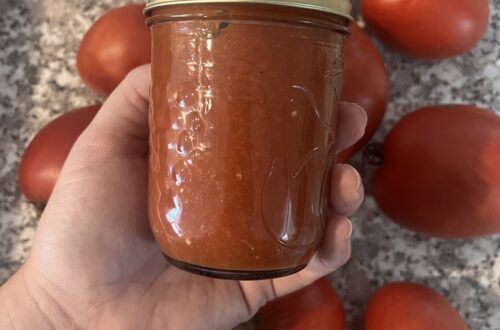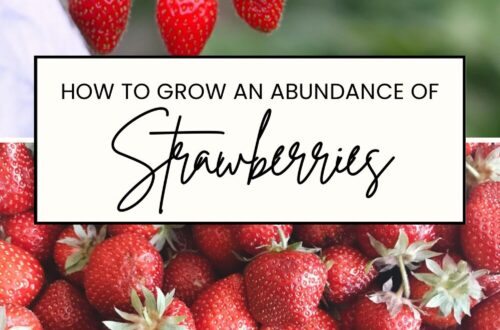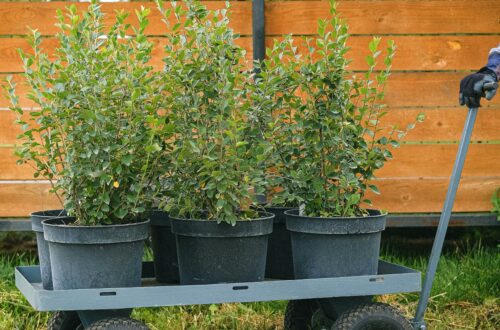Garlic is one of the easiest and most rewarding crops to grow in any home garden. Whether you live in a cold northern climate or a warm southern region, garlic adapts beautifully when planted at the right time and given good soil and care. Keep reading to learn how to grow garlic in this complete guide.
Below you’ll find everything you need to know — soil preparation, planting depth and spacing, when and how to mulch, harvest and curing tips, how to save your own seed garlic, where to buy seed in both Canada and the U.S., and a ready-to-use supplies list.
Choosing the Right Garlic Type
There are two main types of garlic:
- Hardneck garlic: Best suited for cold climates. It’s hardy through deep freezes, offers complex flavor, and produces edible scapes in early summer.
- Softneck garlic: Great for warmer areas. It stores longer, has more cloves per bulb, and doesn’t produce scapes.
If you experience freezing winters, go for hardneck. In mild climates, softneck may be a better choice.
Soil Preparation
- Test and amend pH
Garlic grows best in slightly acidic to neutral soil — pH 6.0 to 7.0. Add lime if your soil is too acidic or sulfur if it’s too alkaline. - Choose a sunny, well-drained spot
Garlic loves full sun and doesn’t tolerate soggy soil. Raised beds or mounded rows help improve drainage. Raised beds might not work in cold northern climates. - Add organic matter
Mix in 2–4 inches of compost or well-rotted manure into the top 6–8 inches of soil. Garlic is a heavy feeder and appreciates fertile ground. - Fertilize at planting
A balanced organic fertilizer or bone meal worked into the soil at planting gives garlic a strong start. Side dressing in the spring works well, too!
Planting Garlic
- When to plant:
Plant in the fall about 4–6 weeks before the ground freezes in cold areas. In warm climates, you can also plant in late winter or very early spring once the soil is workable. - How to plant:
- Break apart your garlic bulbs into individual cloves just before planting.
- Plant cloves pointy side up and flat side down.
- Space cloves 4–6 inches apart in rows 10–14 inches apart.
- Plant each clove 2–4 inches deep, depending on your climate. In cold regions, go slightly deeper (3–4″) to prevent frost heave; in warmer areas, 2 inches is enough.

Mulching
Mulch plays a big role in garlic success — but how much depends on your climate:
- In colder climates: Apply 3–6 inches of straw, chopped leaves, or other organic mulch right after planting. This insulates the cloves over winter.
- In warmer climates: Mulch lightly or skip it altogether to allow the soil to warm up faster in spring.
Mulch also helps retain moisture and suppress weeds — both important for healthy garlic growth.
Spring Care & Scapes
- Feed in early spring:
Once shoots appear, side-dress with compost or give a light feeding of organic fertilizer or fish emulsion. Garlic needs nitrogen early in the season for leaf growth. - Remove scapes (for hardneck varieties):
In late spring, you’ll see curly flower stalks called scapes. Snip them off when they curl once or twice — this directs more energy into bulb growth and gives you delicious, garlicky greens for cooking.
Harvesting and Curing Garlic
- When to harvest:
Garlic is ready when the lower 4–6 leaves have turned brown but 3–4 green leaves remain. Timing varies — usually mid to late summer depending on where you live. - How to harvest:
Gently loosen the soil with a garden fork and pull up bulbs. Avoid tugging by hand — it can damage the neck or bulb. - Curing:
Lay garlic in a warm, airy, shaded spot for 2–6 weeks until the outer skins are dry and papery. Once cured, trim the roots and tops (or braid softneck types). I have regrettably left my harvested bulbs on a rack outdoors and forgot about them. They rotted from being exposed to moisture.
Proper curing is key for long storage and saving seed cloves for next season.
How to Save Garlic for Next Year’s Planting
- Select your best bulbs:
Choose large, healthy, disease-free bulbs — size matters when it comes to next year’s harvest. - Cure fully:
Only fully cured garlic should be saved for planting. - Store properly:
Keep bulbs in a cool, dry, well-ventilated space (ideally 32–50°F or 0–10°C). Avoid sealed plastic bags or high humidity — garlic needs air circulation. - Label varieties:
Keep hardneck and softneck types separate and labeled so you know what you’re replanting.
Troubleshooting & Success Tips
- Don’t plant too early — early fall planting can cause excessive top growth that gets damaged by frost.
- Rotate crops — avoid planting garlic or other alliums (onions, leeks, shallots) in the same spot for at least 3 years.
- Keep weeds down — garlic hates competition.
- Water consistently but don’t overwater — wet feet can cause rot.
- Harvest on time — waiting too long can cause bulbs to split.
Where to Buy Garlic Seed
Canadian Sources
- Veseys Seeds – PEI-based, excellent quality seed garlic and bulbs.
- West Coast Seeds – Organic and non-GMO garlic varieties suited for home gardens.
- Local garlic farms – Check provincial garlic festivals or local farm directories for region-specific suppliers.
U.S. Sources
- Seeds Now – Huge variety of organic garlic options.
- Seed Savers Exchange – Heirloom varieties, great for biodiversity and flavor.
- Territorial Seed Company – Large selection of both hardneck and softneck garlics.
(Pro tip: Order early — garlic seed sells out fast every fall! I’ve missed out a few times.)
Garlic Growing Supplies
- Seed garlic (hardneck or softneck)
- Soil test kit
- Organic compost or bone meal
- Garden fork or broadfork
- Straw or leaf mulch
- Plant labels or row markers
- Fish emulsion fertilizer
- Curing rack or mesh drying tray
This post contains affiliate links. If you purchase through them, I may earn a small commission at no extra cost to you. Thanks for supporting my homestead!



